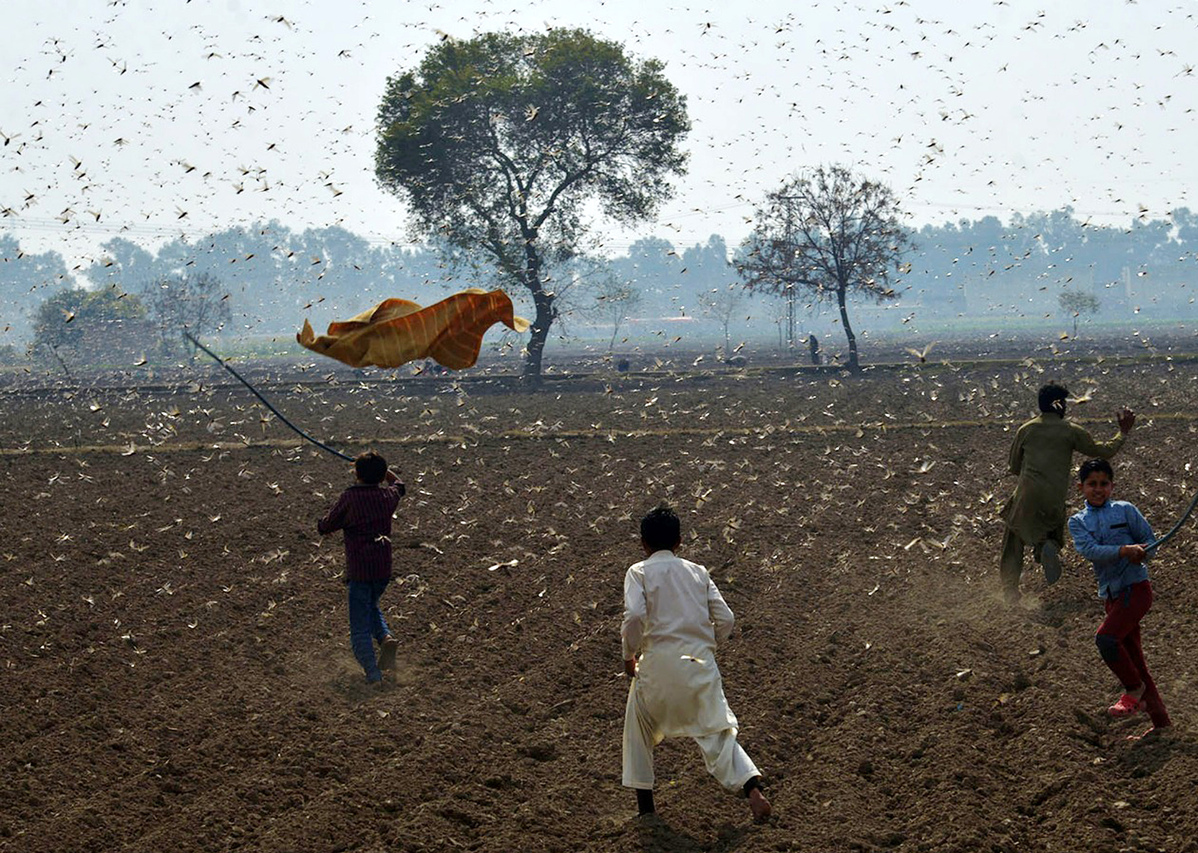After ravaging East Africa, locusts spread fear as they swarm into Asia
By EDITH MUTETHYA in Nairobi, Kenya | China Daily | Updated: 2020-02-18 09:27

The swarms of desert locusts that have been ravaging farms in Ethiopia, Somalia and Kenya since the middle of last year are fanning out from East Africa to hit ever more countries-even in Asia.
In Africa, the locusts arrived in Djibouti and Eritrea in January and are now spreading to Tanzania and Uganda, threatening the food security and livelihoods of millions of people.
The infestation has been called the worst in decades, with the pests devouring pastures and crops in just hours of their arrival at a location. Governments have been struggling in their efforts to battle the insects.
The United Nations World Food Programme, or WFP, has called on the international community to provide $76 million to help governments rapidly scale up aerial spraying and other control measures in the affected areas.
WFP Executive Director David Beasley said in a statement on Friday that it would be vastly more cost-effective to support the Food and Agriculture Organization, or FAO, to tackle the locusts in East Africa now rather than respond later to their impact on the lives of millions across the region.
"If we do nothing now... the WFP will need up to 15 times that amount-more than $1 billion to assist people devastated by losing crops and livelihoods," Beasley said.
He said that, if left unchecked, the devastation could threaten the food security of up to 13 million people.
'High risk'
On Friday, the Food Security and Nutrition Working Group, a regional organization in Africa, warned that the desert locusts are now multiplying across Somalia, Kenya and Ethiopia and more swarms have already been observed in Eritrea, Djibouti and northeastern Uganda.
"Given favorable forecast weather conditions, swarms are expected to increase in areas already affected, as well as spread to neighboring areas. There is also a high risk that locusts will spread to South Sudan," the group warned.
Aside from East Africa, some countries in West Asia and South Asia are also experiencing seldom-seen plagues of locusts. The swarms have been aided by factors such as abundant rainfall with an extended monsoon season.
Even with the locusts now hitting South Asia, it is extremely unlikely that they will migrate directly into China's inland areas. But, if the overseas plagues persist, the probability that the insects enter China in the summer will sharply increase, a Chinese agricultural expert said on Monday.
The border lands between southwest China's Tibet autonomous region and Pakistan, India and Nepal are a desert locust spreading area, said Zhang Zehua, a researcher at the Institute of Plant Protection of the Chinese Academy of Agricultural Sciences.
But due to the limitations of the environment, climate and food, the desert locusts pose little threat to agricultural production in China, and they are unlikely to migrate into China's interior due to the barrier of the Qinghai-Tibet Plateau, Zhang said.
Xinhua contributed to this story.
























